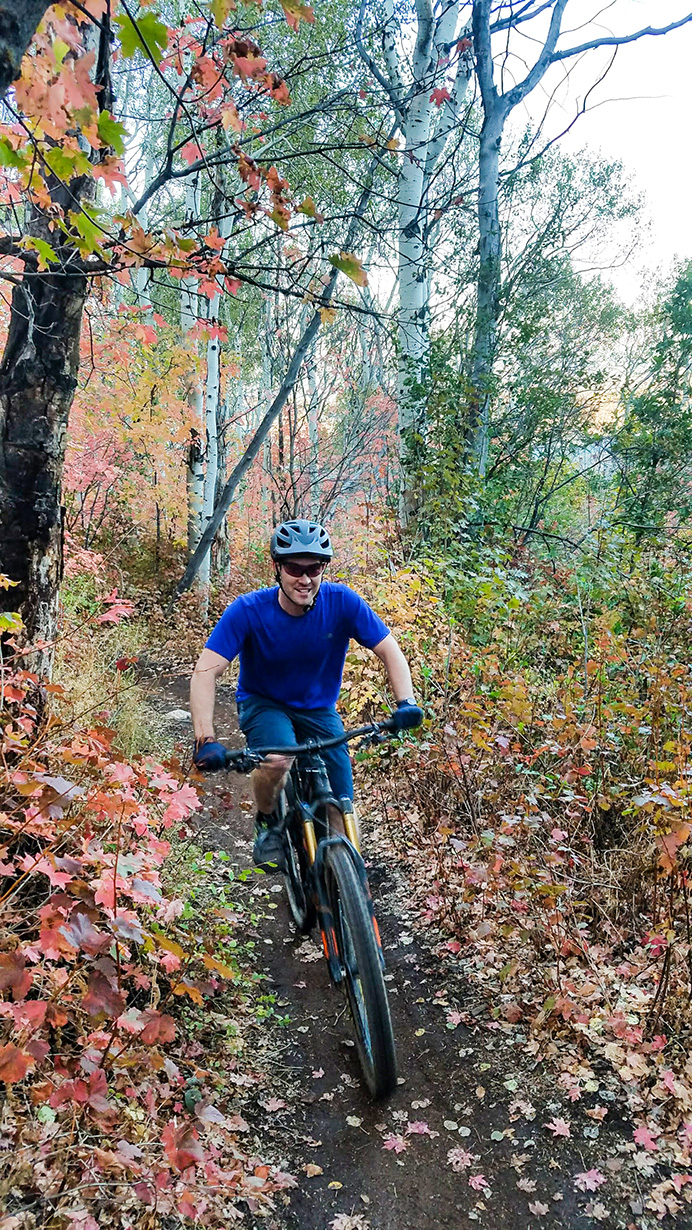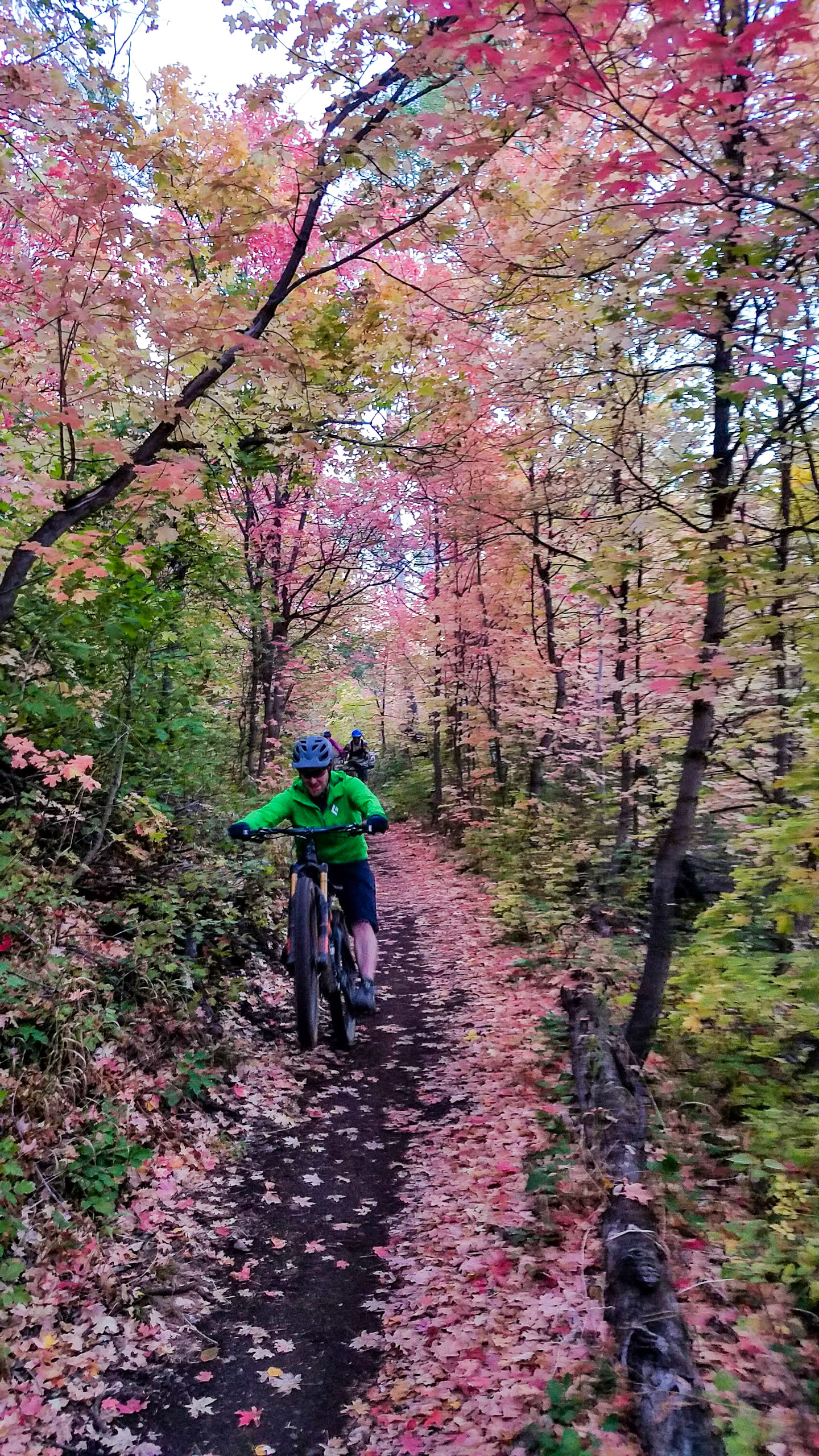Bike: Turner RFX V4.0
Size Tested: Medium
Build Overview:
- Fork: RockShox Pike / Fox 36
- Shock: RockShox Monarch Plus
- Post: KS LEV Integra
- Drivetrain: SRAM GX
- Brakes: Shimano XT
Wheels: 27.5
Travel: 160 mm front, 165 mm rear
Blister’s Measured Weight: 26.5 lbs with Race Face Atlas flat pedals, Reynolds Black Label Wheels, RF Next cranks, and RS Pike fork.
MSRP: $2,995 Frame Only, White Stickers, RockShox Monarch Plus Debonair
Reviewer: 5’8”, 160 lbs
Test Location: Park City, UT
Days Tested: 21 riding days

Intro
Dave Turner introduced the original RFX in 1999, as “one of the first purpose-built ‘free ride’ bikes renowned for excellent descending manners and efficient pedaling in a world where few bikes could do both.”
The bike industry has moved a lot since 1999 — longer travel bikes are more common; top tubes have gotten longer; head angles are more slack, and carbon fiber is everywhere.
Dave Turner has moved a lot too. He’s gone from four bar suspension designs to DW Link suspension; from aluminum frames to carbon; and from rear suspension that pivots on bushings to designs that run on bearings.
All of these changes show up on the new RFX V4.0. Turner now bills the RFX V4.0 as a supremely versatile trail bike, that, with the right build, can be customized as a lightweight, long-travel trail bike; a mid-travel park sled; or anything in between.
The question then is, how does Dave Turner’s version of a “versatile modern trail bike” perform? Does it retain the classic Turner cachet despite the numerous updates? Is it biased more toward the climbing or descending ends of that spectrum? And is it competitive with an increasingly strong field? We’ll start with the RFX V4.0, then offer some comparisons to other relevant bikes at the end.
The Build
I picked up the RFX V4.0 as a stand-alone frame, and built it up with a rotating selection of parts, including: Reynolds Black Label Wheels, 32 mm-wide Nextie carbon rims, a RockShox Pike, a Fox 36 RC2, Maxxis Minion DHF tires, Maxxis Ikon tires, Shimano XT brakes, RaceFace Next SL cranks, SRAM GX drivetrain, and a smattering of other parts.

The different builds I had varied dramatically in weight and intent. At its lightest, the build on the RFX V4.0 was around 26.5 lbs. At its heaviest, it was almost 30 lbs.
Turner does offer the RFX as a complete bike. You can buy it with GX, XT, XTR, XO1 Eagle, and XX1 Eagle drivetrains. Personally, I’d be inclined to save money and stick with the basic GX build, since it is a strong value.
Sizing
Dave Turner has taken a pretty modest approach with his geometry. It is definitely a slacker and longer bike than most were a few years ago, but the chainstays, at 438 mm, aren’t extremely short, and he didn’t jump so far as to make a Medium the same length as Larges of yesterday, as many brands have. The reach is only 412 mm on a Medium, as opposed to newer bikes that are reaching to numbers around 430 mm. However, because the seat angle is slacker than many modern bikes, the effective top tube angle isn’t so different.
I’m running a 50 mm stem on the Turner instead of the 40 mm stem that I’ve been running on long-travel bikes of late. It doesn’t bring the Turner up to quite the same effective net reach as the Large Santa Cruz Nomad I was on previously, but I find 60 mm stems to be too long for aggressive riding on a 160mm-travel bike. Fortunately, I find that I am comfortable on the Turner with the 50 mm stem, and there seems to be a general consensus out there that this bike does not feel particularly short.
By the Numbers
Head Angle
The 66° head angle on the RFX strikes a great balance between stable and quick handling. I’ve found that anything slacker tends to feel dead on flat trails, while a 67° head angle can, at times, get flustered at high speeds and / or on rough trails. That’s not to say that I dislike bikes that are steeper or slacker, but for a bike that I’m going to ride on all sorts of trails (a category I quickly realized the RFX fits into) I’m liking Dave Turner’s choice. As Turner notes on the landing page for the bike, you can run an angleset and slacken it by a degree if you wish to do so.
Chainstays
The 438 mm chainstays on the RFX are a bit longer than current vogue, and the extra 10 mm of length does make a difference. But I like it. I still find the chainstays to be short enough to allow me to manual easily and to keep the bike flickable, but the extra length definitely makes it easy to keep weight on the front tire.

Bottom Bracket
The 340 mm bottom bracket height is reasonably low, but the suspension tends to stay up in its travel, so pedal strikes weren’t common. You do get the benefits of the low bottom bracket; the bike hunkers in corners pretty well.
Seat Tube Angle
The 73.5° seat tube angle is in line with most modern bikes. It isn’t quite as steep as the Santa Cruz Nomad I was on before, but I found it to work just fine.
Wheelbase, Reach, Top Tube
45.5” (1155 mm) wheelbase (my measurement), 412 mm reach, 594 mm top tube.
I’ve made my comments on the reach above, and the only thing I’d add here is that the wheelbase is a bit longer than on many similar bikes because of the longer-than-average chainstays. That does help with stability a bit, but the shorter reach measurement means that it isn’t all that hard to get pushed to the front of the bike in rough terrain. Conversely, only minimal body english is required to maneuver the bike.
NEXT: Frame Details, The Ride, Etc.
